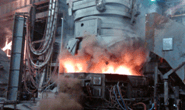Market

August 29, 2021
Ferrous Scrap Trends: Lower in September, But Higher Long Term
Written by Tim Triplett
In the near term, ferrous scrap prices are heading down. But in the long term – with the proliferation of electric arc furnace (EAF) steelmaking around the globe putting added pressure on scrap supplies – the price trend for scrap is definitely pointing upward. The cost of scrap and other metallics is of high interest to steel buyers as it factors into the price of finished steel products.
Sources tell Steel Market Update they expect to see scrap prices decline in September. Prime grades are likely to trade $30-40/GT lower, while obsolete grades will also move down, though probably not as much at around $20/GT.
“It’s still a very fluid situation,” said a dealer in the Northeast. “Primes are weaker because of pig iron price declines. Obsoletes are weaker because export is weaker.”
Prices are likely to decline, but will see more regional variation, commented another scrap exec. The reasons: decreasing prices worldwide for ferrous grades; still-strong inbound flows to scrap yards with historically high prices; and a leveling off of demand. “Most scrap yards are dropping prices now in anticipation of lower September prices. If inbound flow continues at the same pace with these lower prices, the market will drop again in October,” he added.
Speaking at SMU’s Steel Summit in Atlanta on Tuesday, Ben Abrams, CEO of Consolidated Scrap Resources Inc., Harrisburg, Pa., said obsolete scrap flows have tapered over the last month or so. Obsolete flows coming into his company’s yards have fallen by around 13% since mid-July and by about 18% since their peak in June. During that time, prices are off about 7%, or $20/GT. “We think it’s probable the U.S. shred markets follow the July-August decline in the export markets and will soften modestly for the September trade. But despite the challenges Turkish mills are facing and a good bit of uncertainty and lackluster demand from Asia, it’s hard to see U.S. obsolete scrap pricing falling dramatically over the next 30-60 days,” he said.
U.S. prime grades heading into September are a different story, however, Abrams said. The record spread between obsolete and prime scrap – about $155/GT – has likely hit its peak for now, and will decrease moving forward for a while. But this massive spread could well be a preview of what is to come in the next few years in terms of demand and pricing for prime grades, he said.
CRU Senior Analyst Ryan McKinley reported that scrap and metallics prices began to cool this summer in the U.S. and abroad as supplies increased, new COVID outbreaks disrupted production, and import demand in Turkey and other countries eased due to declining finished steel prices. “Scrap prices are moving lower. Scrap supply has risen enough to meet demand even in the high-demand environment we are seeing here in the U.S.,” said McKinley.
Longer term, though, the industry will be challenged to provide enough scrap for the growing number of EAF mills around the world, he explained. Manufacturing, and new creation of scrap, is not growing much in mature exporting markets such as the U.S., Europe and Japan. Where more new scrap is being generated, in emerging markets such as Asia and India, the infrastructure to collect it and get it to market is still immature. Thus there will be a lag before it can help meet the growing global demand for scrap.
In North America, scrap demand is poised to grow to the tune of 16 million tons from 2018-2025 as EAF production increases by an estimated 20%.
Globally, new EAFs will add an estimated 120-130 million tons of new steelmaking capacity – roughly equivalent to an entire U.S. market being added to the global mix during the same period. This will substantially tighten scrap supplies and raise prices in the years ahead, McKinley said.
“I am not here to tell you this will be ‘Scrapmageddon’ for the EAFs. They will still end up getting their supply,” McKinley said. “But it will become more challenging in the future for them to secure their raw materials. And it will have to be done at higher price levels, which is a bit of a threat to steel mill margins.”
Part of the reason McKinley’s scrap supply forecast is not more dire is that China has a huge and growing fund of obsolete scrap, just not the supply chain to collect it. “China is still a scrap importer, but they are sitting on a mountain of scrap. They just have not cultivated it yet.”
But don’t count on China to come to the rescue, said Paul Lowrey, president of Steel Research Associates in Pittsburgh, who also spoke at SMU’s Steel Summit. Whether China restricts scrap exports at some point in the future and hoards it for its own consumption has big implications for the world scrap market.
Demand for prime scrap will be particularly intense as the world transitions to more environmentally friendly EAF steelmaking, Lowrey said, noting that the new flat rolled capacity will require high-quality metallics. He pointed to several factors at play:
- No new domestic sources of prime scrap
- Imports of prime limited by consumption and export restrictions in other nations
- A limited merchant market for direct-reduced and hot-briquetted iron (DRI/HBI)
- Few sources of pig iron, especially since Russia imposed an export tax
Which raises the question – will prime scrap become the next precious metal? It’s certainly not gold, the panelists agreed, but it may prove “semi-precious” for scrap-hungry mills in the future.
“Demand for prime scrap is going up, but supply is not keeping pace. I think higher prices for prime scrap are here to stay,” Lowrey said.
By Tim Triplett, Tim@SteelMarketUpdate.com
The post Ferrous Scrap Trends: Lower in September, But Higher Long Term appeared first on Steel Market Update.






